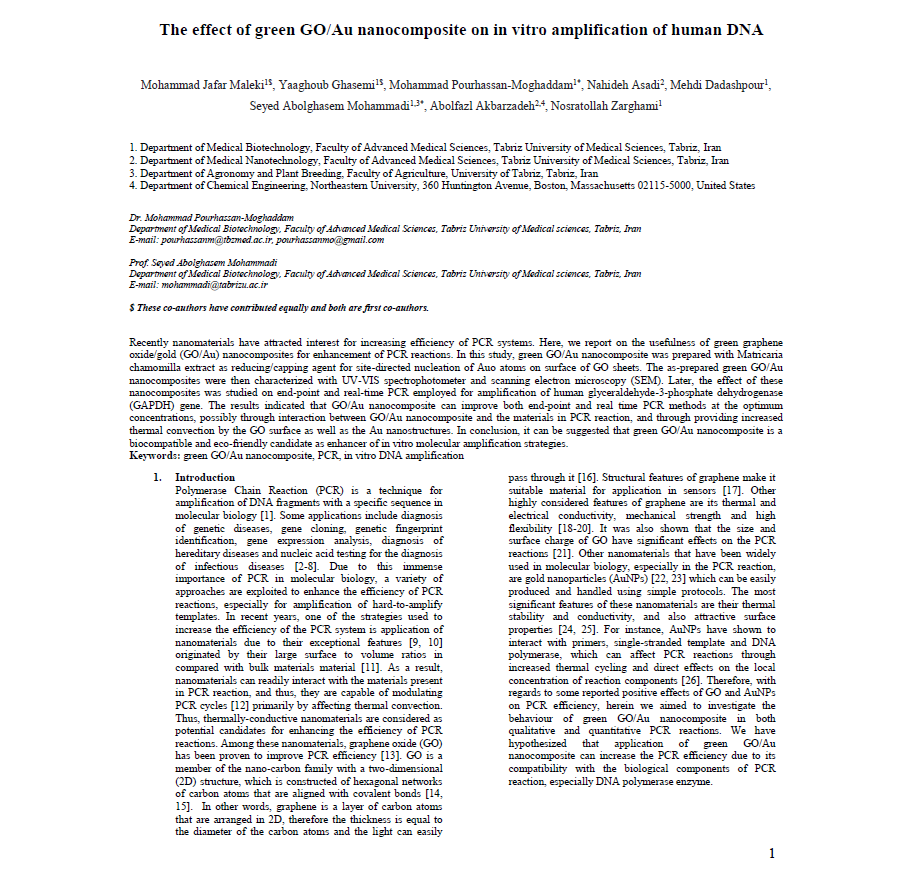
- July 08, 2019
The effect of green GO/Au nanocomposite on in vitro amplification of human DNA
Mohammad Jafar Maleki, Yaaghoub Ghasemi, Mohammad Pourhassan-Moghaddam, Nahideh Asadi, Mehdi Dadashpour, Seyed Abolghasem Mohammadi, Abolfazl Akbarzadeh, Nosratollah Zarghami | Department of Medical Biotechnology, Faculty of Advanced Medical Sciences, Tabriz University of Medical Sciences, Tabriz, Iran, Department of Medical Nanotechnology, Faculty of Advanced Medical Sciences, Tabriz University of Medical Sciences, Tabriz, Iran, Department of Agronomy and Plant Breeding, Faculty of Agriculture, University of Tabriz, Tabriz, Iran, 4Department of Chemical Engineering, Northeastern University, 360 Huntington Avenue, Boston, Massachusetts 02115-5000, United States | 2019 | IET Nanobiotechnology | DOI: 10.1049/iet-nbt.2018.5082
Nanomaterials can be used to increase the efficiency of a PCR system as they have large surface to volume ratios to allow them to readily interact with materials present in the reaction. Previous research has shown that nanomaterials interact with primers, single stranded template and DNA polymerase, which can affect PCR reactions through increased thermal cycling and direct effects on the local concentration of reaction components. This study investigates the behavior of green GO/Au nanocomposite in both qualitative and quantitative PCR reactions. The Green GO/Au nanocomposite was prepared with Matricaria chamomilla extract as reducing/capping agent for site-directed nucleation of Auo atoms on surface of GO sheets. The resultant nanocomposite was characterized by UV-visible spectrophotometer and scanning electron microscopy. A specific region of human GAPDH genes was then amplified in the absence or presence of various concentrations of the nanocomposite in both qualitative and quantitative PCR, performed on the Mic Real-Time Cycler respectively. The GO/Au nanocomposite was found to increase the PCR efficiency at particular concentrations of the nanocomposite, due to its compatibility with the biological components of both qualitative and quantitative PCR reactions, especially the DNA polymerase enzyme.
Read More